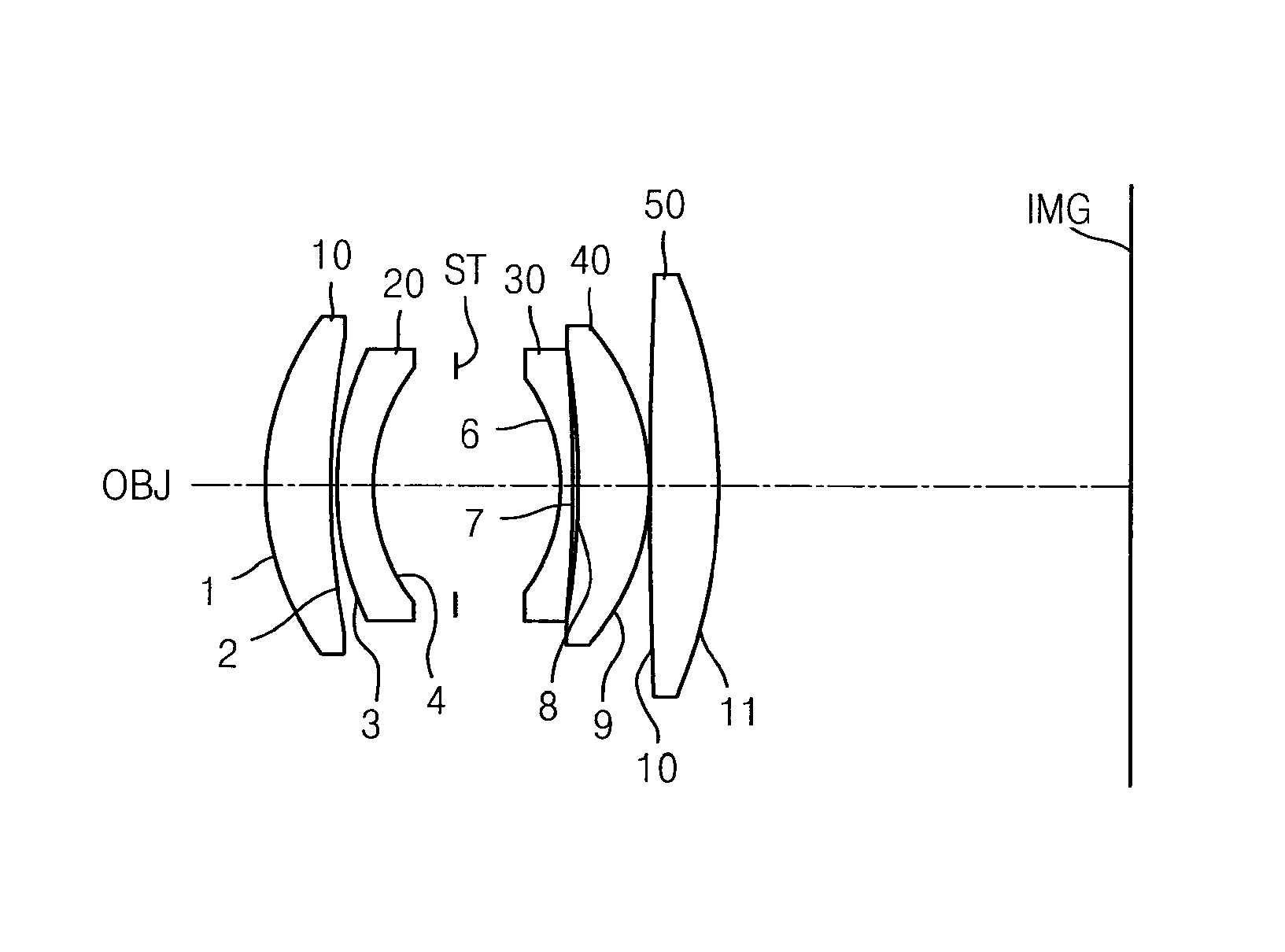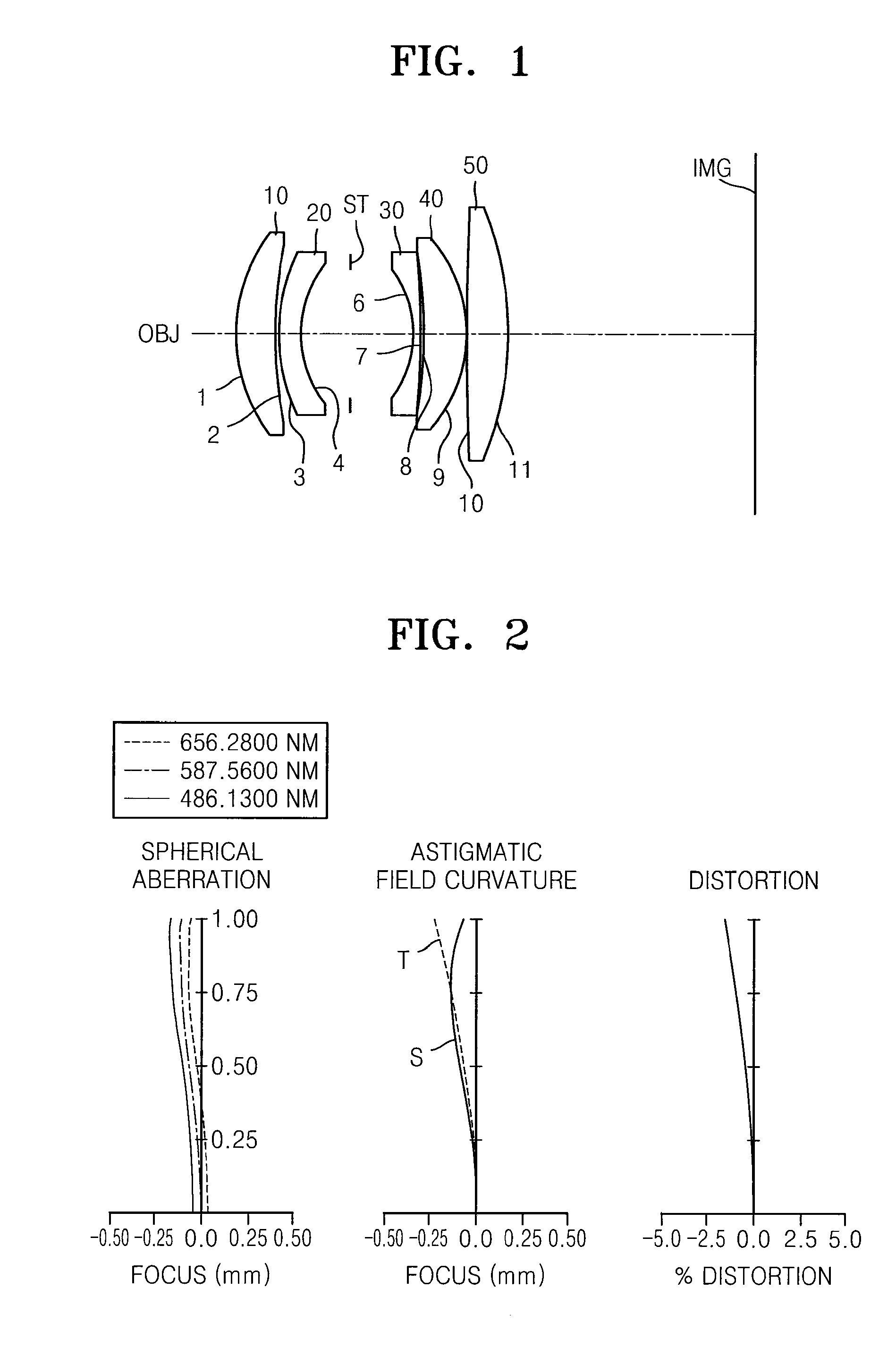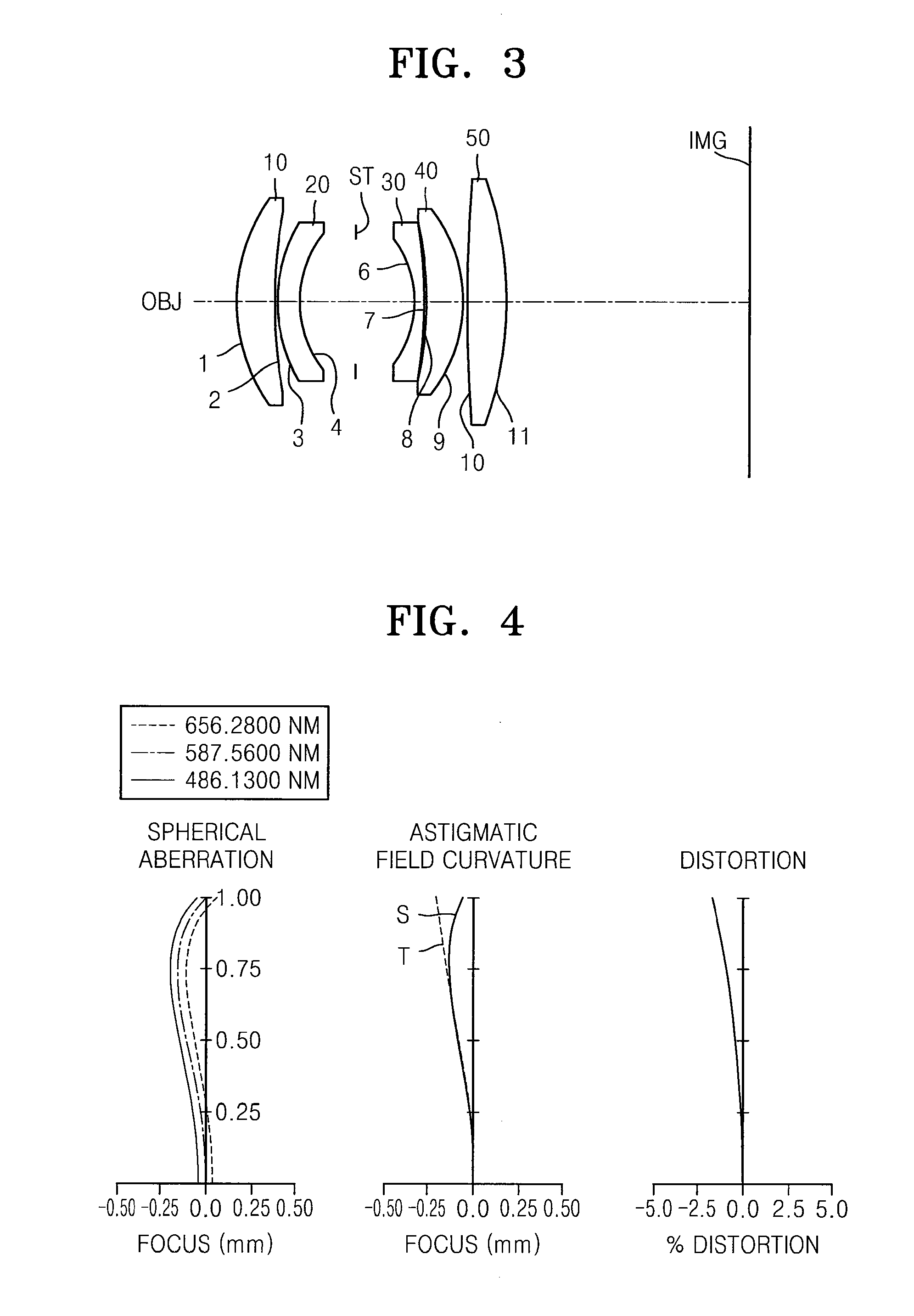Large caliber standard lens
a standard lens, large caliber technology, applied in the field of large caliber standard lenses, can solve the problems of difficult design of easy-to-manufacture lenses, sagittal comatic flare, and disadvantages of double gauss type lenses, and achieve the effect of excellent optical properties and easy manufacturing
- Summary
- Abstract
- Description
- Claims
- Application Information
AI Technical Summary
Benefits of technology
Problems solved by technology
Method used
Image
Examples
first embodiment
[0051]FIG. 1 shows a structure of a standard lens according to a first embodiment of the invention, and FIG. 2 shows a spherical aberration in a longitudinal direction, an astigmatic field curvature, and a distortion of the standard lens according to the first embodiment. The spherical aberration is measured with respect to light having wavelengths of 656.28 (nm), 587.56 (nm), and 486.13 (nm), the astigmatic field curvature includes tangential field curvature (T) and sagittal field curvature (S) with respect to light having a wavelength of 587.56 (nm), and the distortion is measured with respect to light having a wavelength of 587.56 (nm).
[0052]The lens data of the first embodiment is as follows.
[0053]
EFL: 30.76 mm Fno: 2.07 2ω: 50.66radius ofrefractiveAbbe'sSurfacecurvaturethicknessindex (nd)No. (vd)112.8753.341.6968055.5235.4000.29313.8301.851.6838431.6 4*8.9464.25ASPK: 0.02 A: 1.107210e−005 B: 1.837000e−007 C: 0.000000e+000D: 0.000000e+000STInfinity5.406−8.3000.651.7847225.77−5...
second embodiment
[0054]FIG. 3 shows a structure of the standard lens according to a second embodiment, and FIG. 4 shows a spherical aberration in a longitudinal direction, an astigmatic field curvature, and a distortion of the standard lens according to the second embodiment. The spherical aberration is measured with respect to light having wavelengths of 656.28 (nm), 587.56 (nm), and 486.13 (nm), the astigmatic field curvature includes tangential field curvature (T) and sagittal field curvature (S) with respect to light having a wavelength of 587.56 (nm), and the distortion is measured with respect to light having a wavelength of 587.56 (nm).
[0055]The lens data of the second embodiment is as follows.
[0056]
EFL: 31.01 mm Fno: 2.02 2ω: 50.22radius ofrefractiveAbbe'sSurfacecurvaturethicknessindex (nd)No. (vd)114.0803.251.6968055.5235.0000.33312.0001.981.7618226.648.6805.00STInfinity5.076−8.5300.901.8466623.87−39.3700.218−29.5003.241.8830040.89−11.6900.3310 147.5003.461.8830040.811 −28.86021.58IMG
third embodiment
[0057]FIG. 5 shows a structure of the standard lens according to a third embodiment, and FIG. 6 shows a spherical aberration in a longitudinal direction, an astigmatic field curvature, and a distortion of the standard lens according to the third embodiment. The spherical aberration is measured with respect to light having wavelengths of 656.28 (nm), 587.56 (nm), and 486.13 (nm), the astigmatic field curvature includes tangential field curvature (T) and sagittal field curvature (S) with respect to light having a wavelength of 587.56 (nm), and the distortion is measured with respect to light having a wavelength of 587.56 (nm).
[0058]The lens data of the third embodiment is as follows.
[0059]
EFL: 31.02 mm Fno: 2.08 2ω: 49.13radius ofrefractiveAbbe'sSurfacecurvaturethicknessindex (nd)No. (vd)117.5592.851.7550052.32114.6161.58337.0562.001.6889331.1 4*15.9013.31ASPK: −2.995164A: 1.070950e−004 B: −7.887539e−008 C: 0.000000e+000D: 0.000000e+000STInfinity5.406−9.6550.651.7521125.07−81.4580.4...
PUM
 Login to View More
Login to View More Abstract
Description
Claims
Application Information
 Login to View More
Login to View More - R&D
- Intellectual Property
- Life Sciences
- Materials
- Tech Scout
- Unparalleled Data Quality
- Higher Quality Content
- 60% Fewer Hallucinations
Browse by: Latest US Patents, China's latest patents, Technical Efficacy Thesaurus, Application Domain, Technology Topic, Popular Technical Reports.
© 2025 PatSnap. All rights reserved.Legal|Privacy policy|Modern Slavery Act Transparency Statement|Sitemap|About US| Contact US: help@patsnap.com



